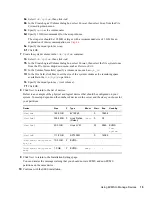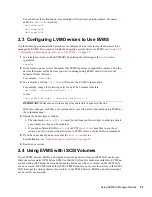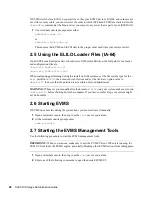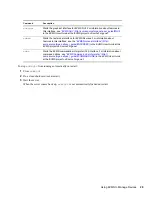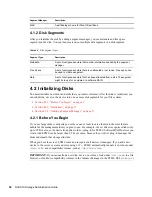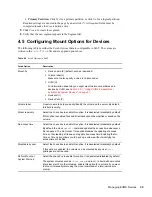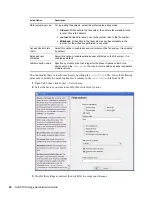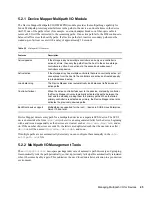
Using UUIDs to Mount Devices
3
no
vd
ocx
(e
n)
6 Ap
ril 20
07
31
3
Using UUIDs to Mount Devices
This section describes the optional use of UUIDs instead of device names to identify file system
devices in the boot loader file and the
/etc/fstab
file.
Section 3.1, “Naming Devices with udev,” on page 31
Section 3.2, “Understanding UUIDs,” on page 31
Section 3.3, “Using UUIDs in the Boot Loader and /etc/fstab File (x86),” on page 32
Section 3.4, “Using UUIDs in the Boot Loader and /etc/fstab File (IA64),” on page 33
Section 3.5, “Additional Information,” on page 34
3.1 Naming Devices with udev
In the Linux 2.6 and later kernel,
udev
provides a userspace solution for the dynamic
/dev
directory, with persistent device naming. As part of the hotplug system,
udev
is executed if a device
is added or removed from the system.
A list of rules is used to match against specific device attributes. The
udev
rules infrastructure
(defined in the
/etc/udev/rules.d
directory) provides stable names for all disk devices,
regardless of their order of recognition or the connection used for the device. The
udev
tools
examine every appropriate block device that the kernel creates to apply naming rules based on
certain buses, drive types, or file systems. For information about how to define your own rules for
udev
, see
Writing udev Rules
(http://reactivated.net/writing_udev_rules.html)
.
Along with the dynamic kernel-provided device node name,
udev
maintains classes of persistent
symbolic links pointing to the device in the
/dev/disk
directory, which is further categorized by
the
by-id
,
by-label
,
by-path
, and
by-uuid
subdirectories.
NOTE:
Other programs besides
udev
, such as LVM or
md
, might also generate UUIDs, but they
are not listed in
/dev/disk
.
3.2 Understanding UUIDs
A UUID (Universally Unique Identifier) is a 128-bit number for a file system that is unique on both
the local system and across other systems. It is a randomly generated with system hardware
information and time stamps as part of its seed. UUIDs are commonly used to uniquely tag devices.
Section 3.2.1, “Using UUIDs to Assemble or Activate File System Devices,” on page 31
Section 3.2.2, “Finding the UUID for a File System Device,” on page 32
3.2.1 Using UUIDs to Assemble or Activate File System
Devices
The UUID is always unique to the partition and does not depend on the order in which it appears or
where it is mounted. With certain SAN devices attached to the server, the system partitions are
renamed and moved to be the last device. For example, if root (
/
) is assigned to
/dev/sda1
Summary of Contents for LINUX ENTERPRISE SERVER 10 - STORAGE ADMINISTRATION GUIDE 7-2007
Page 4: ...novdocx en 6 April 2007...
Page 30: ...30 SLES 10 Storage Administration Guide novdocx en 6 April 2007...
Page 42: ...42 SLES 10 Storage Administration Guide novdocx en 6 April 2007...
Page 58: ...58 SLES 10 Storage Administration Guide novdocx en 6 April 2007...
Page 90: ...90 SLES 10 Storage Administration Guide novdocx en 6 April 2007...
Page 100: ...100 SLES 10 Storage Administration Guide novdocx en 6 April 2007...
Page 106: ...106 SLES 10 Storage Administration Guide novdocx en 6 April 2007...



